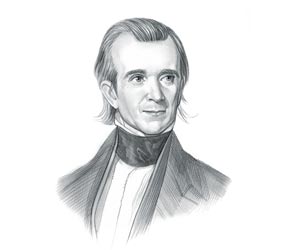|
|
|
|
|
The prospectors and gold seekers were called "forty-niners" or the "49ers" as the majority of them reached the location of the goldfields in 1849 in search of instant wealth and riches beyond their wildest dreams. In one year alone (1852) the take was $80 million, equivalent to nearly $2 billion in modern dollar currency.
The
California Gold Rush History for kids
California Gold Rush Timeline, History and Facts for kids Jan 24, 1848: Gold is discovered by James Marshall at Sutter's timber Mill. John Sutter visits the site and request the news is kept secret for six weeks Feb 2, 1848: Treaty of Guadalupe Hidalgo Mar 15, 1848: News of the strike in Sierra Nevada "in considerable quantities" is reported in a San Francisco newspaper in the west of the country, but many people remain skeptical about the report Mar 15, 1848: The first prospectors in the west start making plans to go to Coloma Apr 1, 1848: News of the discovery spreads to the East May 12, 1848: Gold fever hits San Francisco sparked by Sam Brannan. The sale of picks, pans, and shovels in Sam Brannan's store booms and nearly all of the male population of San Francisco leave the city in a rush to the goldfields as the first Chinese immigrants arrive in San Francisco Aug 19, 1848: The New York Herald is the first eastern newspaper to report the gold strike Dec 5, 1848: President James K. Polk makes an address to Congress in which he confirms the gold strike in California. Dec 5, 1848: The legitimate confirmation by President Polk leads to the 1849 California Gold Rush Apr 1849: Nearly 30,000 men from the east congregate in Independence, Missouri to travel in wagon trains over land to California Jun 1849: Some gold-seekers travel by sea, around Cape Horn to reach the goldfields 1849 - The Forty-Niners: Over 90,000 gold-seekers flock to the Californian goldfields in 1849 and become known as the "Forty-Niners". In early August the news of the goldmines reaches Oregon and migrants begin moving south Sep 1, 1849: Californian delegate assemble in Monterey to draft a state constitution, requesting admittance to the Union. Apr 9, 1850: Many foreign nationals, including Mexicans, Chinese and Native Indians, are forced to leave the area due to the tax and threats of violence and intimidation from the white prospectors Apr 1850: California legislature passes the Foreign Miners Tax, charging foreign nationals $20 a month for the right to work their claims Sep 9, 1850: Congress agrees to the Compromise of 1850, which admits California to the Union as a free state March 14 1851: The Foreign Miners Tax is repealed. May 1852: The California legislature passes a second Foreign Miners Tax targeting the Chinese Mar 1853: Edward Matteson invents the hydraulic mining technique 1854: The California Supreme Court limits the rights of racial minorities. The ruling by the supreme court results in only testimony of a white citizen can be used as evidence in court. The number of racial attacks increase, with little recourse for the victims, and many leave the goldfields July 15, 1854: A dispute over a gambling table escalates into the Weaverville War The gold rush and gold fever finally eased in 1855, when the gold output stabilized but by this time many Americans had settled in California. Communications systems to the east were vital and the Pony Express was established until the Transcontinental Telegraph was completed |
| US American History |
| 1841-1850: Westward Expansion |
|
|
|
|
|
First Published2016-04-19 | |||
|
Updated 2018-01-01 |
Publisher
Siteseen Limited
| ||
|
|

